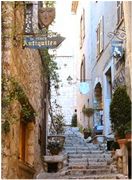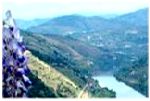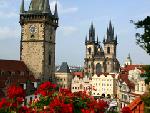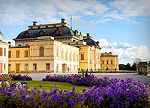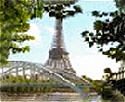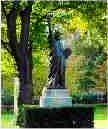|
Page 1,
2,
3,
4,
5,
6,
7,
8, 9,
10,
11
|
| Eiffel and Radio
Experimentation The first experimental radio transmission from
the tower was in 1898 when Eugene Ducretet, at the Pantheon, received
signals from the tower. In 1889, Eiffel began to fit the peak of the
tower as an observation station to measure the speed of wind. He also
encouraged several scientific experiments including Foucault's giant
pendulum, a mercury barometer.
Eiffel and Aviation
After Eiffel had experimented in the field of meteorology, he began
to look at the effects of wind and air resistance, the science that
would later be termed aerodynamics. This field has become a large part
of military and commercial aviation as well as rocket technology.
Gustave Eiffel imagined an automatic device sliding along a cable that
was stretched between the ground and the second floor of the Eiffel
Tower. In 1910, using the Eiffel Tower as a test platform, he achieved
remarkable experimental results in measuring the wind resistance of a
flat plate.
Wind Tunnel Testing
The limited capacity of the available measuring instruments led Eiffel
on a quest for a more sophisticated knowledge of aviation and,
eventually, to wind tunnel experiments. He built a wind tunnel on the
Champ de Mars, which was in use from 1909-1911. The tunnel was
sufficient for lab experiments but inadequate for the study of
airplanes. However, with the help of several other engineers, Leon Rith
and Lapresle, Eiffel made over 5,000 tests in this lab. Almost all the
pioneers of aviation conducted tests in this wind tunnel.
Fighter Plane Design
A better wind tunnel, which is still in use, was built between
1912-1914. Here, Eiffel began experiments with military equipment for
WWI fighter planes. In 1917, the Eiffel Laboratory designed a very
advanced monoplane fighter of which two prototypes were built in Breguet.
One crashed due to pilot error.
Eiffel was a contemporary of Samuel Langeley, the president of the
Smithstonian Institute, for whom the NASA's Langely Research Center was
named. Much of Eiffel's work had gone on to help expand the science of
aerodynamics. NASA used many propeller and wind tunnel experiments in
their trainer planes for astronauts.
Leading
European Authority on Aerodynamics
Eiffel was the leading European authority on the aerodynamics of high
frames [he wrote "The Resistance of the Air" in 1913]. In the
construction of the Eiffel Tower, the curve of the base pylons was
precisely calculated so that the bending and shearing forces of the wind
were progressively transformed into forces of compression, which the
bents could withstand more effectively. Such was Eiffel's engineering
wizardry that even in the strongest winds his tower never sways more
than 4-1/2 inches. The super skyscrapers erected since 1960, such as the
World Trade Center, were constructed in much the same way.
Died
He died on December 27, 1923 at the age of 91. In 1964, the tower was
registered as a Parisan historical monument. Eiffel's descendants
founded the Fondation Gustave Eiffel in 1995. |


